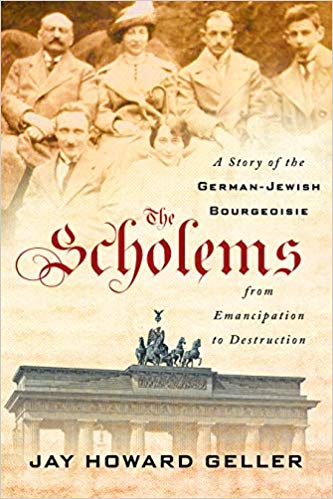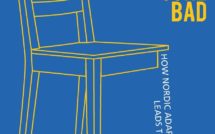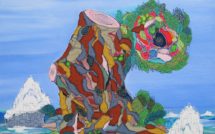
The Scholems: A Story of the German-Jewish Bourgeoisie from Emancipation to Destruction by Jay Howard Geller

Steven E. Aschheim recently summarized the tall order facing any biographer of Gershom Scholem, the preeminent scholar of Jewish mysticism, kabbalistic literature, and Jewish historiography(born in 1897 in Berlin) by stating:
“The ‘ultimate’ biographer of Scholem would not only have to document, contextualize, and assess Scholem’s life and scholarship, as well as analyze the relation (or possibly the nonrelation) between the two, but also master key aspects of 19th– and 20th-century German and European cultural and intellectual life, as well as the study of Kabbalah, German Jewry, Zionism, and Israel.”[i]
Formulating this charge, Aschheim had no less than four new biographies of the German Jewish intellectual giant in front of him: David Biale’s Gershom Scholem: Master of the Kabbalah (2018), Amir Engel’s Gershom Scholem: An Intellectual Biography(2017), Noam Zadoff’s Gershom Scholem: From Berlin to Jerusalem and Back(2017), as well as George Prochnik’s Stranger in a Strange Land: Searching for Gershom Scholem and Jerusalem (2017). Needless to say, such a proliferation of works on Scholem would scare off even the most seasoned historian of Jewish culture. However, it prompted Jay H. Geller, Samuel Rosenthal Professor of Judaic Studies at Case Western Reserve, to do just the opposite: to realign the focus upon the man who had single-handedly invented an entire field of Jewish religious studies spanning from late antiquity to the twentieth century, by presenting Gershom Scholem, simply, as a member of a German Jewish bourgeois family: The Scholems: A Story of the German-Jewish Bourgeoisie from Emancipation to Destruction.
Setting out to write such a saga of the entire Scholem family, Geller must have intuited that there is hardly any place or need left for yet another biography of the deanof studies of Jewish mysticism who published some forty volumes and wrote innumerous letters. The many attempts at chronicling Scholem’s life since his death in 1982 had been fueled by a plethora of documents that have become ever more readily accessible, many of them prime resources for the study of Jewish scholarship and of life in Germany, Palestine, and Israel. An increase in data on Jewish life in the society in which the Scholems built their printing business has allowed historical analysis to flourish, and it should be said from the outset that one of the most compelling aspects of Geller’s fascinating book is the ease and competence with which he summons historical information to situate the life, letters, and accounting books, as it were, of his protagonists in a rich tableauof German Jewish life; the scope of the canvass is large: spanning the era from the beginnings of emancipation and ending not with the destruction of Jewish life in Europe, but rather with a chapter called “Afterlives,” which chronicles the existence of the surviving members of the family in Israel and in exile in Australia until long after World War II had ended.
Intimately familiar with the political history of Germany and with Jewish life in Germany, Geller can tell the stories of the Scholems within a set of substantive coordinates: his demographic account of Berlin’s citizenry allows the reader to place the emergence of a Jewish bourgeoisie into context, just as the growing number of intermarriages provided by Geller make the reader understand to what degree marrying a non-Jewish partner would raise eyebrows in Jewish living rooms; an outline of the systematic exclusion of Jews from all areas of German society illustrates how fast the end of the Scholem’s professional existence was approaching. Preparing a thoroughly researched historical canvass of both Jewish life in general and of family dynamics in particular, Geller can tell his story of the Scholem family as a kind of case study in which many details that have vexed Gershom Scholem scholarship can remain of little concern. Whether Geller is correct in stating that “Gershom was a resolute pacifist,” (63) even though Scholem himself once confessed: “…I wanted to learn to shoot – I was no pacifist – but I didn’t want to fight for Germany”[ii]it remains, in the end, of little significance in an account that shows how an entire Jewish family ended up being drawn into and impacted by World War I.
The unique design of Geller’s study succeeds in turning the tropes of Scholem biographies into virtues: rather than adding yet another subtle facet to the quite easily catalogued main stations of Scholem’s most accomplished career, Geller adds something important to the very “sub-discipline” of Scholem scholarship by reframing many of its, at times arcane, subtleties and minutiae. It is obvious that a narrative that encompasses the lives of six immediate family members (the towering father and businessman Arthur, the mother Käthe who has yet to be really appreciated by scholarship, their sons Reinhold, Erich, Werner, and finally Gerhard, later known as Gershom) cannot possibly care about in-depth readings of the many aspects with which Aschheim had charged the biographer. To be sure, this is by no means a way of lowering the bar – Geller has to align, over and over again, the story line of the family’s most prominent member, Gershom, with the complex lives of the rest of the cast, among whom his brother Werner (1895-1940), emerges as the most compelling figure. Werner’s early commitment to the political causes of the left placed him on a trajectory that would secure him a seat in the Prussian Parliament, in the Politbüroof the Communist party, and eventually in various jails. The Nazis killed him in 1940 in Buchenwald. Mirjam Zadoff’s 2014 biography of him (Der Rote Hiob) is now available in English translation (Werner Scholem. A German Life, University of Pennsylvania Press)—a rich source without which this family history would have been even harder to fathom.
This narrative alignment works out beautifully when both of the younger sons become the targets of paternal wrath: In an interview conducted in 1975, Scholem recalls how his own turn to Zionism and his brother’s political activities were about to tear the middle-class world of his family home apart: “Early in 1917 my brother was arrested for participating in an antiwar demonstration. And Papa threw me out of the house. He said: ‘It’s all the same – socialism, Zionism – it’s all antipatriotic. He sent me a registered letter ordering me to leave his household by March 1, 1917.’” [iii]
While the story of the father follows the trajectory of the family’s elderupset by his offspring’s inability to follow in his footsteps to ever deeper assimilation, neither Werner nor Gershom pattern their lives on that of the prodigal son. The part of the youngsters who join their parents’ assumption that Germany will ultimately accept its Jewish citizens without any reservations was taken on by Gershom’s two older brothers, Reinhold und Erich, both of them becoming involved in the family’s printing business that had allowed the family quite a comfortable life in Berlin. What results was a family dynamic as centrifugal as the one of the Weimar Republic itself: While the oldest brother Reinhold, wearer of the Iron Cross, succeeded as patriotic businessman (co-owning, with his brother Erich, the family’s printing business), Erich became a liberal democrat—Werner instead opted to join parties of varying shades of red and married a non-Jewish woman. And while Gershom’s turn to Jewish scholarship and Zionism exiled him from the very milieu of acculturated Jewish Berliner, it did not mark a complete break with German culture: Geller quotes the observation of the historian Fritz Stern visiting Scholem’s home in Jerusalem which “resembled a German academic home of long ago, more ‘German’ than anything I had ever seen in postwar Germany” (140).
Gershom undoubtedly provides the axis around which any portrayal of the family would be organized. Yet Geller provides, especially Werner, and to a lesser degree their mother Betty, with strong contours that round out the gallery of a family in which the word was used to differentiate, battle, but also to create caring links of mutual support (as documented in the rich correspondence between Gershom and his prolific mother). Interestingly, the life of Werner has been commemorated with quite some interest in postwar German literature intrigued by leftist Weimar politics (and often deaf towards the notion of Jewish identity)—a literature that Geller does not have to mention since neither of these pieces have yet to be translated into English. Not surprisingly, the peregrinations of Reinhold, Erich and their families, are being told only by Geller who thus can offer an intriguing comparison of the various attitudes toward German Jewish history as they were displayed amongst the surviving brothers. The correspondence between Reinhold and Gershom shows the large extent to which their relationship was pretty much a ‘missed connection:’ “So unfortunately you missed the history of my youth and my development” writes Gershom in May 1972 to his brother.[iv]Ernst Bloch’s notion of the “simultaneity of the non-simultaneous” thus could have served well as the subtitle for Geller’s study.
Geller leaves his readers very little to dispute, and even where they may find fault, Geller could explain himself easily: The chapters’ somewhat repetitious passages and formulations tend to interrupt the steady flow of the narrative through which the author captures the lives of his protagonists. This, however, allows the individual chapters to be read in isolation from each other—a feature that readers who are selective in their interests and pressed for time, will appreciate. And since most readers tend to fall into this category, they most likely will not even notice this type of subtle reprise.
Thomas Nolden is Professor of German Studies at Wellesley College. He has previously taught at the University of California at Berkeley, the Freie Universität Berlin, and as visiting professor at Brandeis University and M.I.T.His publications include Contemporary Jewish Writing in Europe. A Guide (with Vivian Liska), Voices from the Diaspora: Jewish Women Writing in Contemporary Europe (with Frances Malino), In Lieu of Memory: Contemporary Jewish Writing in France, Junge jüdische Literatur. Konzentrisches Schreiben in der Gegenwart, and ‘An einen jungen Dichter’: Studien zur epistolaren Poetik.
The Scholems: A Story of the German-Jewish Bourgeoisie from Emancipation to Destruction
By Jay Howard Geller
Hardcover / 329 pages / 2019
Publisher: Cornell University Press
ISBN: 978-1-5017-3156-3
[i]Steven E. Aschheim, “The Secret Metaphysician” in Jewish Review of Books, Fall 2018.
[ii]Gershom Scholem, On Jews and Judaism in Crisis, 16.
[iii]Gershom Scholem,On Jews and Judaism in Crisis. Selected Essays, edited by Werner J. Dannhauser, (New York: Schocken Books, 1976) 15.
[iv]GershomScholem,A Life in Letters, 1914-1982, edited by Anthony David Skinner, (Cambridge, Ma and London: Harvard UP, 2002) 444.




